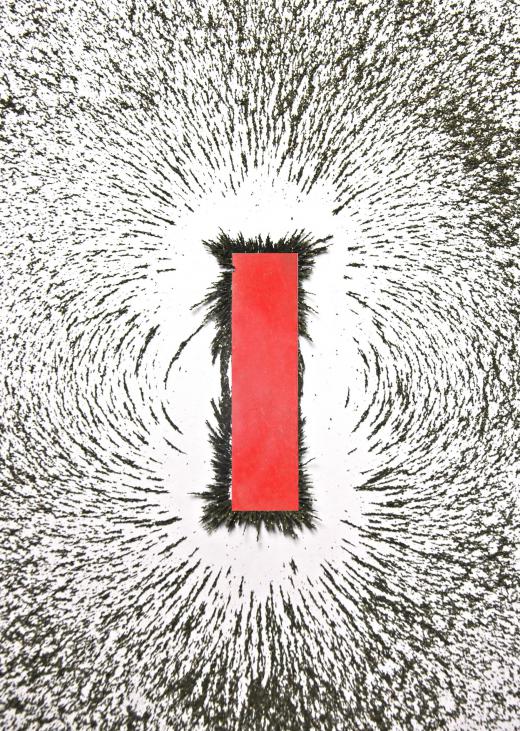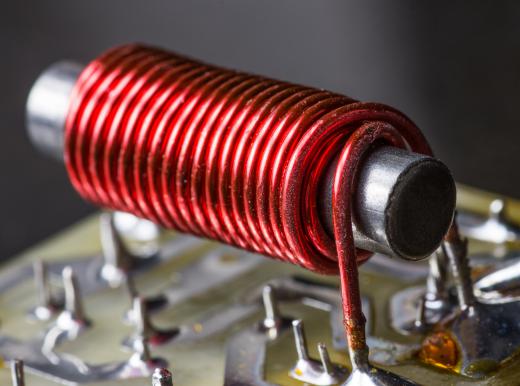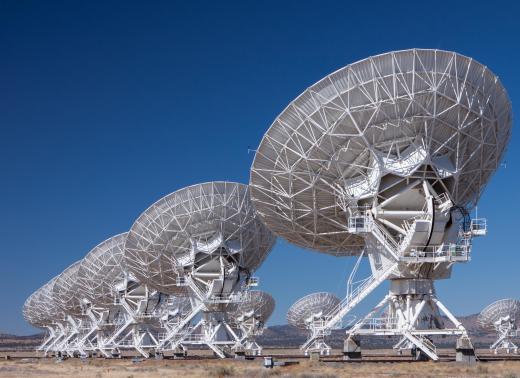What is Electromagnetic Force?
In physics, the electromagnetic force is an influence that affects electrically charged particles. Along with gravity, it is the force that humans encounter most on an everyday basis, and it explains most of the phenomena with which people are familiar. It is responsible for electricity, magnetism, and light; it holds electrons and protons together in atoms; and it allows atoms to bond together to form molecules and drives chemical reactions. This force is also responsible for the solidity of solid objects and is the reason they cannot pass through one another.
The electromagnetic force is one of the four fundamental forces of nature. The other three are the gravitational force, the strong nuclear force, and the weak nuclear force. The strong nuclear force is the strongest of these, but it operates only over an extremely short range. The electromagnetic force is the second strongest and, like gravity, operates over unlimited distances.
The Inverse Square Law

Like gravity, the electromagnetic force follows the inverse square law. This means that the force's strength is inversely proportional to the square of the distance from its source. So, for example, if someone moves 5 units away from the source of the force, the intensity is reduced to 1/25th.
Positive and Negative Charges
Unlike gravity, the electromagnetic force is felt only by objects that have an electric charge, which can be positive or negative. Objects with differing types of charges attract one another, but those with the same type repel. This means that the force can be attractive or repulsive, depending on the charges involved. Since most objects, most of the time, do not have an overall electric charge, they do not feel the electromagnetic force, which explains why gravity, although a much weaker force, dominates on large scales.

When two different materials rub together, electrons can move from one to the other, leaving one with a positive charge and the other with a negative charge. The two will then attract one another, and may be attracted to electrically neutral objects. This is known as static electricity and can be demonstrated by various simple experiments, such as rubbing a balloon with a piece of fur and sticking it to a wall — it is held there by electrostatic attraction.

An electric current flows when electrons move along a wire or other conductor from a region with an excess of electrons to one where there is a deficit. The current is said to flow from negative to positive. In a simple circuit using a battery, electrons flow from the positive to the negative terminal when the circuit is completed.
At the atomic scale, the attraction between positively charged protons in the nucleus and negatively charged electrons outside holds atoms together and allows them to bond with one another to form molecules and compounds. The protons in the nucleus are held in place by the strong nuclear force, which, at this extremely small scale, overcomes the electromagnetic repulsion.
Electromagnetic Fields

The concept of electromagnetic fields was first developed by the scientist Michael Faraday in the early 19th century. He showed that electrically charged and magnetized objects could influence one another at a distance. For example, an electrical current flowing through a coil of wire could deflect a compass needle and induce a current in another, nearby, coil. He also showed that a changing magnetic field could produce an electrical current in a wire. This established a connection between electricity and magnetism and the existence of a field that varies with distance surrounding electrically charged or magnetic objects.

Later in the 19th century, the physicist James Clerk Maxwell produced a series of equations that explained not only the relationship between electricity and magnetism, but also showed that light was a wave-like disturbance of the electromagnetic field. He reached this conclusion when he calculated the speed at which electromagnetic influences travel and found that this was always the speed of light. The implication was that light was a form of electromagnetic radiation that traveled as waves. This led to the theory of classical electrodynamics, in which an electromagnetic wave is generated by a moving electrical charge. The movement of a coil of wire in a magnetic field can generate low energy radio waves, while the more energetic movement of electrons in a hot wire can generate visible light.
Quantum Electrodynamics
With Einstein’s investigation of the photoelectric effect, in which light can dislodge electrons from a metal surface, came the discovery that electromagnetic radiation (EMR) can behave as particles as well as waves. These particles are called photons. Electrons in an atom can gain energy by absorbing a photon and lose energy by emitting one. In this way, EMR can be explained as the emission of photons when electrons experience a drop in energy levels.
According to quantum theory, all four forces of nature can be explained in terms of the exchange of particles, like photos in the case of the electromagnetic force. In order to explain this force in a manner that was consistent with quantum theory, the theory of quantum electrodynamics was developed. The idea is that the electromagnetic force is mediated by “virtual” photons that exist only fleetingly during interactions between charged particles. It explains all electromagnetic interactions and rigorous testing has proven that it is a very accurate theory.
AS FEATURED ON:
AS FEATURED ON:















Discussion Comments
@ Aplenty- One famous chemistry experiment that comes to mind would be Robert Milikan's experiment that he did to find the charge of an electron. Electromagnetic charge is measured in Coulombs, and the experiment was designed to measure the charge of an electron in coulombs (it is approx 1.6*10^-19 by the way). The other fundamental force involved was gravity.
The importance of this experiment was it allowed Milikan to discover the mass of an electron. Because of this experiment, we now know that an electron is 9.10939 billionth of a billionth of a billionth of a gram. If you research this experiment of two fundamental forces and explain its significance, I am sure you will earn your extra credit.
Can someone give me an idea for a chemistry experiment that uses electromagnetic force? I my lab professor asked the class to research an experiment that uses at least one of the four fundamental forces, but I will get extra credit if I can find an experiment that incorporates two or more fundamental forces. I am a new chemistry student, so I would like to find an experiment that has significance to the field of chemistry. If someone could point me in the right direction, I would be grateful.
Post your comments